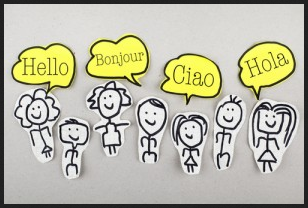Description of Bilingualism and Multilingualism
a. Bilingualism
Speaking two languages rather than just one has obvious practical benefits in an increasingly globalized world. The use of two languages in a society is called bilingualism. The bilingualism can be literally well known. According to Hamers and Michel (2000),The concept of bilingualism refers to the state of a linguistic community in which two languages are in contact with the result that two codes can be used in the same interaction and that a number of individuals are bilingual (societal bilingualism); but it also includes the concept of blinguality (or individual bilinguality)” (p. 42).
It means bilingualism is a situation where a speaker can use two languages as well. Meanwhile, Muysken (2000), “An ideal bilingual switches (mixes) from one language according to appropriate changes in the speech situation (interlocutor, topic, etc.) but not in an unchanged speech situation and certainly not within a single sentence” (p. 1).
Based on the discussion, the writer concludes that code switching and code-mixing are part of the study of bilingualism which have become a very popular language, it is to be an influence for smooth communication in Indonesia. Furthermore, bilingualism occurs because of habit. Some people use more than one languages because their language ability has developed. They can use not only their first language but also another language. In the process interaction, people may have the bilingual communication. And they are also able to choose which language is going to use.
b. Multilingualism
Multilingualism becomes social phenomenon governed by the needs of globalization and cultural openness. Mesthrie, Swann, Deumert, Leap, (2009) state, “The term ‘multilingualism’ in the more general way (to mean the use of two or more languages). Neither usage is quite satisfactory, and the reader has to deduce whether in certain cases multi- means ‘two’ or bi means ‘more than two’.” (p. 37). It means, multilingualism is condition where the people use more than two languages to communicate with others. According to Myers-Scotton (2006), “Multilingualism is speaking more than two languages” (p. 2). It means, multilingualism is the use of two or more languages by speakers for communicating.Based on the theory, it can be concluded that bilingualism is the use of two languages by a speaker in the interaction with the speaker of other language. Beside bilingualism, there is multilingualism. Actually, the concept of bilingualism and multilingualism is same. However, multilingualism is regarding the use of state of more than two languages by a speaker when communicating with others in turn.
References:
Muysken, Peter. (2000). Bilingual Speech: A Typology of Code-Mixing. New York: Cambridge University Press.
Mesthrie, Rajend, Swann, Joan, Deumeurt, Ana and Leap, William L. (2009). Introducing Sociolinguistics. Edinburgh: Edinburgh University Press.
Myers-Scotton, C. (2006). Multiple Voices: An Introduction to Bilingualism. Malden: Blackwell Publishing.
Bagikan
What are Bilingualism and Multilingualism?
4/
5
Oleh
Unknown







Facebook Comment
Untuk menyisipkan kode pendek, gunakan <i rel="code"> ... KODE ... </i>
Untuk menyisipkan kode panjang, gunakan <i rel="pre"> ... KODE ... </i>
Untuk menyisipkan gambar, gunakan <i rel="image"> ... URL GAMBAR ... </i>